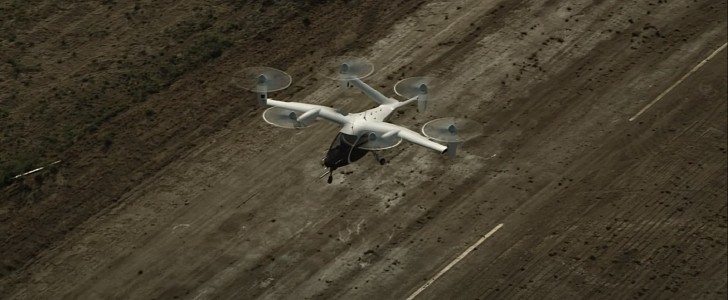A team of researchers at Carnegie Mellon University (CMU) has successfully tested a game-changing AI (Artificial Intelligence) pilot, the first of its kind that can navigate in a crowded airspace just as well as its human counterpart.
Ever since the notion of air taxis became widespread, the idea was that they would eventually be able to operate without human assistance. There's already a pilot shortage, and the aircraft of the future should come with that by being fully autonomous.
According to CMU’s AI pilot team, current autopilot controls can only operate at higher altitudes under instrument flight rules (IFR). But it’s been a challenge to come up with an autopilot system that can easily navigate lower-altitude traffic, operating under visual flight rules (VFR).
Most experts agree that an image of commercial aviation in the future includes drones, air taxis, and medical helicopters, in addition to the aircraft already in operation. This leads to the difficult task of regulating this urban airspace in order to prevent accidents and traffic jams. Things would be much easier if a lot of these new aircraft were operated by AI pilots that are almost identical to human ones.
The CMU team has developed an AI pilot that could fit the bill. Using six cameras and an advanced vision system, it can distinguish other aircraft almost like a human. Using speech recognition and natural language processing techniques, it’s able to understand radio messages and respond. It can basically communicate with other pilots and with air traffic controllers through speech.
Jay Patrikar, a doctoral student at CMU’s Robotics Institute, told Popular Science that the AI pilot is able to determine its next moves based on what the nearby aircraft are doing, like playing chess. Two real-world airports in Pennsylvania were used to gather data, from visual information to weather data. All of this was then used to “train” the AI.
CMU successfully tested its AI pilot on flight simulators, and the next step will be to test it on actual aircraft. The project is supported by the U.S. Army Research Office and the Army Futures Command's Artificial Intelligence Integration Center (AI2C).
According to CMU’s AI pilot team, current autopilot controls can only operate at higher altitudes under instrument flight rules (IFR). But it’s been a challenge to come up with an autopilot system that can easily navigate lower-altitude traffic, operating under visual flight rules (VFR).
Most experts agree that an image of commercial aviation in the future includes drones, air taxis, and medical helicopters, in addition to the aircraft already in operation. This leads to the difficult task of regulating this urban airspace in order to prevent accidents and traffic jams. Things would be much easier if a lot of these new aircraft were operated by AI pilots that are almost identical to human ones.
The CMU team has developed an AI pilot that could fit the bill. Using six cameras and an advanced vision system, it can distinguish other aircraft almost like a human. Using speech recognition and natural language processing techniques, it’s able to understand radio messages and respond. It can basically communicate with other pilots and with air traffic controllers through speech.
Jay Patrikar, a doctoral student at CMU’s Robotics Institute, told Popular Science that the AI pilot is able to determine its next moves based on what the nearby aircraft are doing, like playing chess. Two real-world airports in Pennsylvania were used to gather data, from visual information to weather data. All of this was then used to “train” the AI.
CMU successfully tested its AI pilot on flight simulators, and the next step will be to test it on actual aircraft. The project is supported by the U.S. Army Research Office and the Army Futures Command's Artificial Intelligence Integration Center (AI2C).






